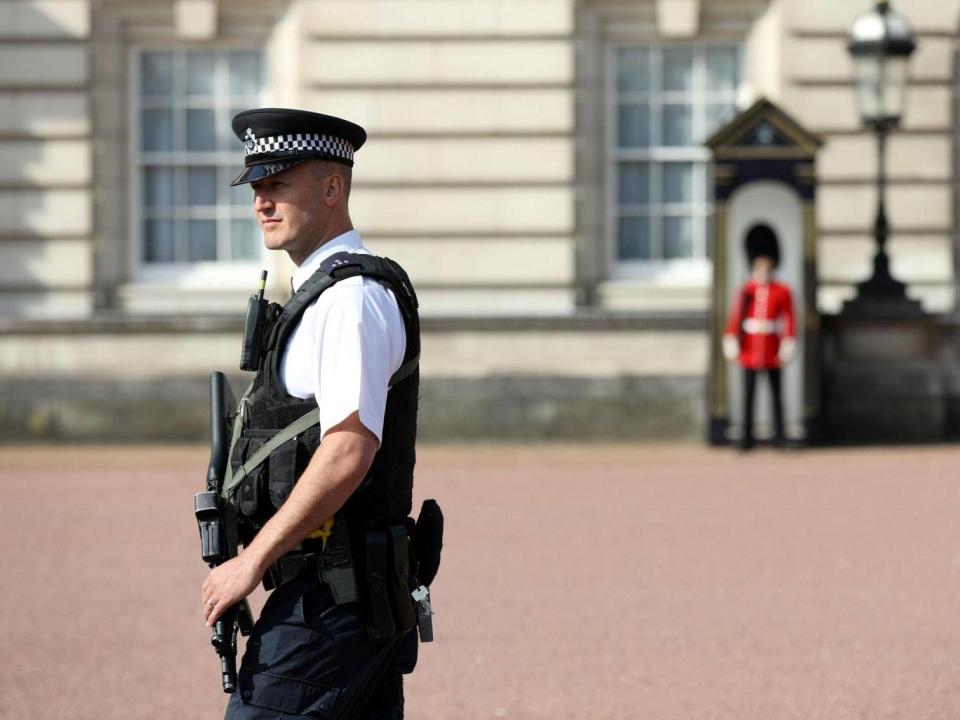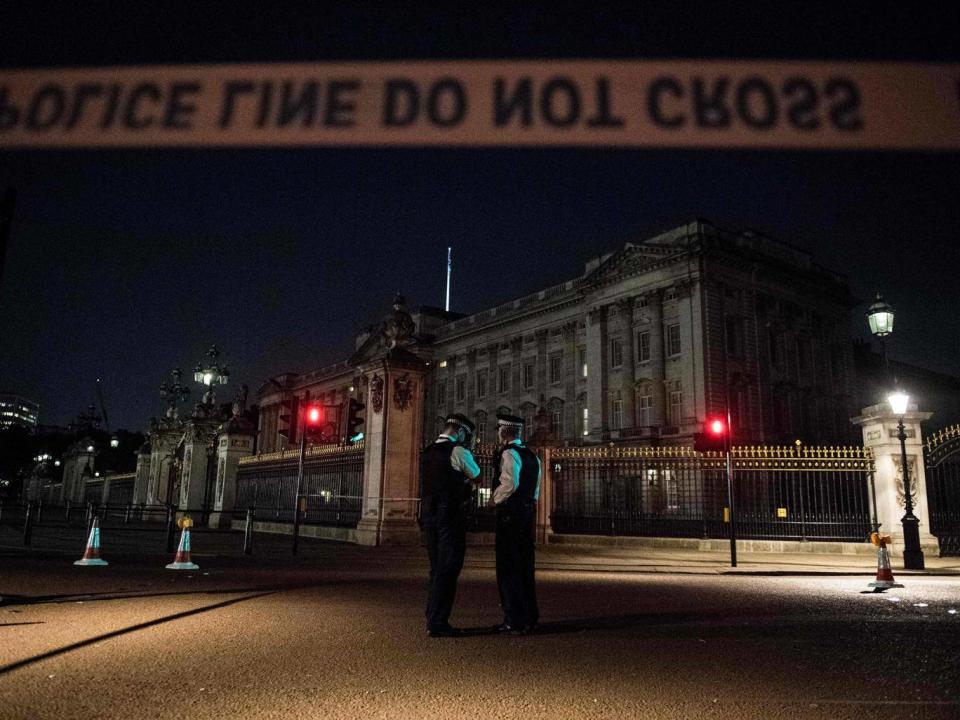Buckingham Palace sword attacker 'drew picture of jihadi shooting police officer in prison', court hears

An alleged Isis supporter who attacked police with a sword outside Buckingham Palace drew a picture of an officer being shot while in prison, a court has heard.
Mohiussunnath Chowdhury, 27, is accused of attempting a terror attack in August 2017 but denies the charge and claims he was on a “suicide by cop” mission.
The Old Bailey heard the Uber driver, from Luton, swerved into the path of a marked police van outside the Queen's official residence.
When two officers approached his car, Mr Chowdhury allegedly grabbed a sword and tried to attack them with it while “repeatedly shouting Allahu akbar”, before being overpowered and detained.
He was in custody at HMP Belmarsh while awaiting trial when a routine inspection on 26 September this year uncovered the image of a police officer being shot outside Downing Street, with the door covered in blood.
Drawn under selected Quranic verses, the attacker was depicted as a jihadi, dressed in black and shouting “allahu Akbar” while firing a machine gun.
The picture was stuck on Mr Chowdhury's cell wall alongside another picture depicting the 11 September 2001 attacks in New York, with the caption “9/11: 3,000 dead, Iraq invasion 1,000,000 dead”.
In a separate search on 2 October, prison guards found another document allegedly written by the suspect on “taghut” - a term that can refer to devil-worship in Islam.
It listed democracy as a cause of such worship, and named numerous countries including the UK, US, Turkey, Israel and Russia as the “allies of Satan”.
The document named military personnel and police officers among the “ranks of taghut”, adding: “It is halal [permissable] to fight them”.

Prosecutor Timothy Cray said the documents showed Mr Chowdhury's personal justification for the attempted terror attack.
“They help to make clear what he believed and what he intended in August last year,” he told the jury.
“These are his words, his images. They show very clearly that he thinks fighting the enemies of Islam means carrying out violent attacks on the enemies of Islam and those enemies include the police in the UK.
“He also believes that the martyrs who fight the enemies of Islam will be rewarded in paradise, that is the exchange or the bargain [referred to in the prison drawings].”
The jury was also read messages Mr Chowdhury allegedly sent to his friends in the days before the attack on WhatsApp.
He is accused of sharing Isis propaganda videos and documentaries on the terrorist group.
“Not cool, I get worried about you,” a friend told him on 19 August 2017.
Mr Chowdhury allegedly replied: “Bro I'm already radicalised.”
Days later, messages appeared to show him arguing with another friend about Islam and accusing America of “killing millions of Muslims”.

Mr Chowdhury allegedly defended Isis even after his friends challenged him over the group's alleged war crimes and sexual enslavement of Yazidi women and girls, adding: “The worst Muslims are better than the best kuffar [disbelievers]...they will go into the hellfire.”
The court heard that Mr Chowdhury used a black Isis flag as his WhatsApp display picture, before changing it to a green bird in “reference to potential martyrdom” on the morning of his attack.
Prosecutors said Mr Chowdhury had conducted numerous internet searches for Isis beheading videos and the executioner known as Jihadi John, whose real name was Mohammed Emwazi.
On 25 August 2017, he transferred £200 to his sister and sent her a note saying that by the time she read it he would “be with Allah” in paradise.
The letter, which described Mr Chowdhury as a “shaheed” - meaning martyr – said: “The Queen and her soldiers will all be in the hellfire they go to war with Muslims around the world and kill them without any mercy. They are the enemies that Allah tells us to fight. Please make dua [pray] for me that Allah accepts my efforts.”
Prosecutors said that shortly before sending the note, the defendant had driven to his local Sainsburys and bought a sharpening tool that he used on a sword he owned.
A 6.30pm the same day, he left his family home in Luton and drove towards Windsor, arriving two hours later.
“Rather than the royal castle, he stopped outside a pub called 'The Windsor Castle', possibly due to him entering the incorrect destination into his SatNav,” Mr Cray said.
Mr Chowdhury then drove into central London and went in a loop near Buckingham Palace until 8.30pm, when he allegedly swerved through cones into the path of a marked police van.
The two uniformed officers inside initially thought the driver may be drunk or on drugs, the jury was told, and went to investigate.
“What happened next was bad enough and involved both the threat and use of violence, but you may think that it was due to the bravery and quick reactions of the police that the defendant was stopped from doing something that had even more serious consequences,” Mr Cray said.
As the officers got to the car, the defendant allegedly said “it's all a bit f***ed up” and then reached for a sword, starting a fight with officers who punched him and used CS spray.
“The defendant was shouting the words ‘Allahu akbar’ over and over again,” Mr Cray said.
“The officers, understandably enough, believed by the end of the incident that they were preventing a terrorist attack.”
The incident followed attacks claimed by Isis in Westminster, Manchester and London Bridge.
A search of Mr Chowdhury's bedroom found imitation guns and prosecutors questioned why he would not have used those, instead of a sharpened sword, if he wanted to commit “suicide by cop”.
“The imitation guns couldn't hurt anyone, but waving these around outside Buckingham Palace would eventually lead to the defendant being shot by armed officers wouldn’t they,” Mr Cray said.
“We say the choice of weapon shows the defendant’s true purpose – it wasn’t just suicide, he was prepared to attack the police who he thought were the enemies of Islam.”
The trial continues.

 Yahoo News
Yahoo News 
